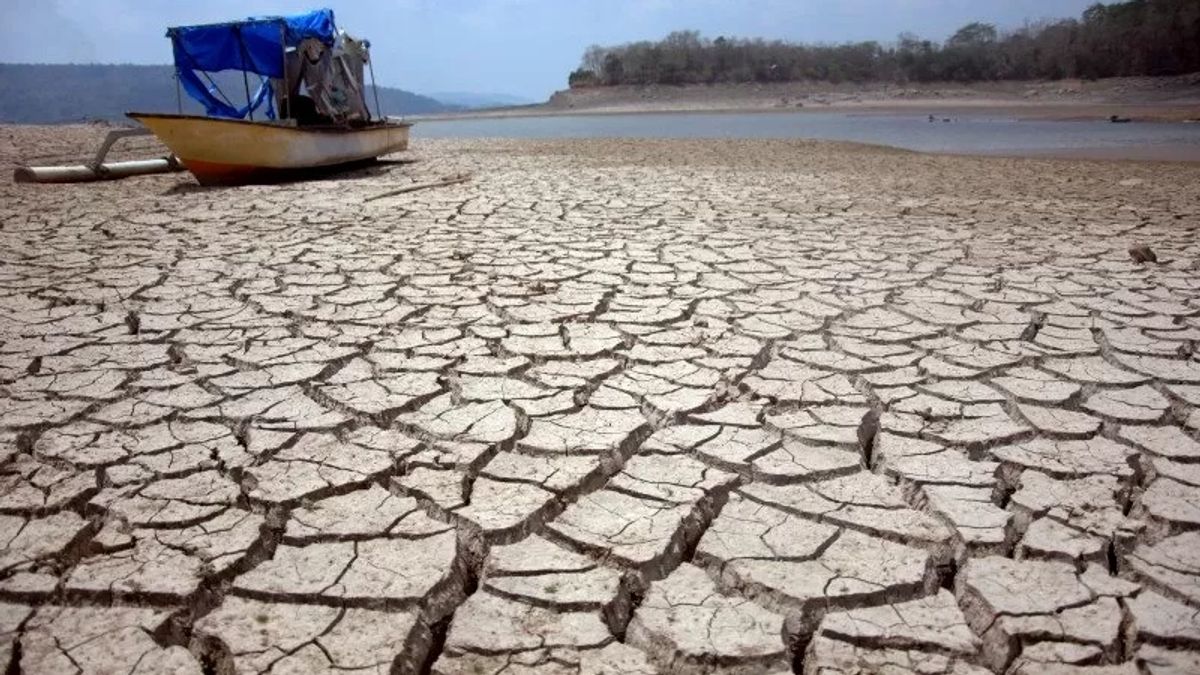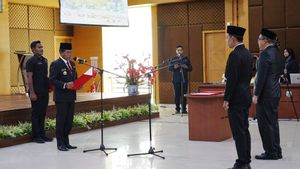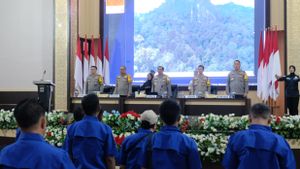JAKARTA - The phenomenon of drought that occurs due to climate change is increasingly widespread to various countries in the world causing serious problems with the agricultural sector in providing food to the community.
Head of the Meteorology, Climatology and Geophysics Agency (BMKG) Dwikorita Karnawati said science-based solutions were an effort to mitigate drought in Indonesia.
"Yesterday this year it was drier than the previous three years (2020-2022) dry. Why do we know? Because there are data, observations, and analysis," he said in a virtual discussion "West Merdeka Forum 9 regarding water sustainability", Monday, February 20, was confiscated by Antara.
Based on BMKG forecasts, Indonesia will start entering the dry season from June to September 2023. However, bee rain is still pouring down to this day.
Science-based solutions by applying weather modification technology are carried out to force rain to fall to fill reservoirs, dams, and dry lands. Thus, when the dry season does not have a severe effect on drought.
Dwikorita said that his party together with the Ministry of Environment and Forestry (KLHK) had prepared weather modification technology which would be implemented from the end of February to May 2023.
In addition, BMKG has also coordinated with the Ministry of PUPR to add drill wells as an effort to mitigate drought.
"Science based based based on data analysis is a solution that is integrated with infrastructure readiness to regulate governance and needs to be done with community based," said Dwikorita.
In disaster risk reduction management related to drought conditions, he explained, it cannot only rely on science and technology, as well as infrastructure management alone, but also community involvement through empowerment so that farmers can participate in harvesting water.
Dwikorita said that farmers who usually experience drought in Gunung Kidul, Yogyakarta, have made dams in rivers that are usually dry to collect rain. When it enters the dry season, the water stored in the dam is flowed slowly to wet their agricultural land.
Spokesperson for the Ministry of PUPR Endra Atmawidjaja said the government is currently continuing to build dams to irrigate agricultural lands so that farmers can utilize land to produce food throughout the year.
"If there is no dam, we can only park once with rice and once with a palawija. Now (after there is a dam) we can plant at least twice as much rice and once on a rice field, depending on the availability of water in the dam," said Endar.
Since 2014, the government has started to initiate the construction of 61 dams in various regions in Indonesia. From the target of the 61 dams, as many as 36 dams have been completed and the remaining 25 dams are in the construction stage.
"The construction of the dam aims to increase the water capacity so that during the rainy season it does not flood and during the dry season it does not drought," he concluded.
The English, Chinese, Japanese, Arabic, and French versions are automatically generated by the AI. So there may still be inaccuracies in translating, please always see Indonesian as our main language. (system supported by DigitalSiber.id)








